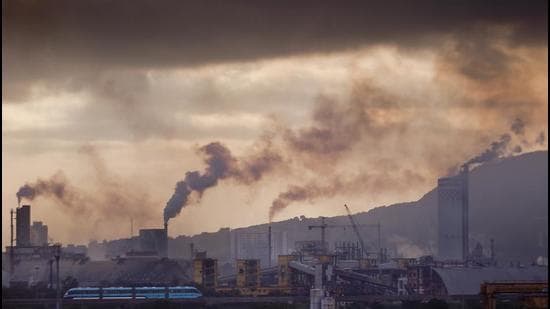Why the developed world must be net-negative by 2050
NDCs need to be revised, and in an upward direction by all countries, more so the developed world, which also needs to meet its commitments on climate finance
The 26th meeting of the Conference of the Parties (COP26) is now barely three weeks away, and the temperature for the negotiations is heating up. The developed world, led by the United States (US) and the United Kingdom (UK), is pushing to secure commitments of net-zero greenhouse gases (GHG) emissions by 2050 from all nations, individually.

Net-zero by 2050 as a global goal must be discussed seriously and tallied with the science. The Intergovernmental Panel on Climate Change (IPCC) has underscored that unless immediate and ambitious climate actions to reduce GHG emissions are taken, the earth’s temperature is set to rise to about 2.7 degrees Celsius by the end of the century. But the goal must operate as per the principles of the United Nations Framework Convention on Climate Change (UNFCCC), including equity and common but differentiated responsibilities (CBDR), and respective capabilities.
Net-zero by 2050 by all countries individually seeks to bury the basic climate burden-sharing principle of differentiation. It may further hit climate justice through the iniquitous use of the remaining carbon budget, irrespective of whether we set the limits of temperature rise by the end of the century at 2 degrees or 1.5 degrees Celsius. If the developed world has bowled a googly of net-zero by 2050 by all, the developing world may have to play either with a straight bat or use the reverse sweep, by demanding a net-negative emissions commitment by the developed world well before 2050 — for there can be no global net-zero unless they do this first.
According to a UNFCCC assessment, limiting the global average temperature increase to the Paris goal of 2 degrees Celsius by the end of this century requires a 25% reduction in GHG emissions by 2030. The aspiration of limiting the rise to only 1.5 degrees Celsius raises this level to a 45% reduction in 2030 compared to 2010. The Nationally Determined Commitments (NDCs) under the Paris Accord of all 191 parties taken together will result in a 16% increase in global GHG emissions in 2030 compared to 2010. However, the revised NDCs of 113 parties may see emissions reductions of 26% by 2030 compared to 2010.
Interestingly, even the huge pandemic-induced downturn saw no let-up in the adverse impact of the climate crisis, underscoring the criticality of adaptation. While platitudes about making Glasgow the Adaptation COP abound, there is a likelihood of mere lip service being paid to adaptation again. NDCs, covering both mitigation and adaptation, need to be revised and in an upward direction by all countries, more so the developed world, which also needs to meet its commitments on climate finance.
At a recent pre-COP-26 event hosted by Italy, the key message was for large developing countries individually to sign up to net-zero by 2050. The message was clearly aimed at China, India, Brazil and South Africa (BASIC) plus Russia, Turkey, Indonesia and Saudi Arabia. Indeed, they are all clubbed as major emitters, even though India can hardly be called that given that its per capita emissions are just about half of the global average and its levels of GHG emissions have little in common with China and the others. Apart from the major countries in the developed world, the charge was also led by small island-States and least-developed countries, identified as groupings of the vulnerable.
The Energy and Climate Intelligence Unit (UK) has a website tracking the “race” to net zero. It lists Surinam and Bhutan as having already achieved it. Twelve countries plus the European Union (as a bloc) have enshrined it in law, while three have legislation in progress. Forty-three countries, including China (which has declared a 2060 timeline) are noted as countries that have mentioned it in policy documents, while another 80 have it in the discussion process. This includes India and Russia.
Interestingly, only five countries have net-zero targets before 2050: Finland (2035); Austria (2040); Iceland (2040); Germany (2045); Sweden (2045), and of these, just Germany and Sweden have these in law, while the other three have the targets mentioned in the policy document. Moreover, among the 43 is the US, where internal politics leaves the question of significant domestic action on climate quite open.
Climate negotiations are just not about the environment or even energy security. They are, in fact, strategic negotiations where the pulls and pressures of international linkages see their full play and governmental decisions need to be calibrated to take all these factors into account. For a country such as India, which has taken on huge green commitments, especially on renewables, but with a real per capita income of just around $2,000, development itself is, perhaps, the most critical imperative and can hardly be delinked from its climate agenda. It is also critical for meeting the imperatives of adaptation. India’s leadership in upholding climate justice and the development imperatives of developing countries is a must.
Manjeev Singh Puri is a former ambassador who has served as India’s climate negotiator and is a distinguished fellow, TERI
Shailly Kedia is a fellow and associate director, TERI
The views expressed are personal
All Access.
One Subscription.
Get 360° coverage—from daily headlines
to 100 year archives.



HT App & Website







